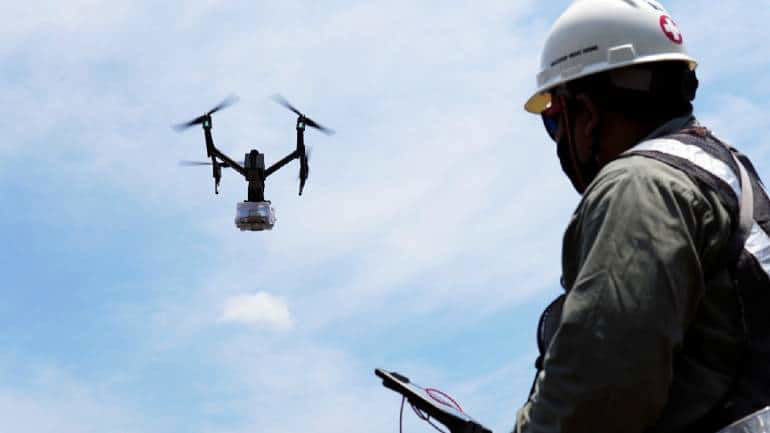
The “terrorist events” of 9/11 had a profound impact on Timothy Bean, Chief Executive Officer of Fortem Technologies. Bean, a software engineer, became a part of a business that launched signals to detect terrorists after 30 years in Silicon Valley. He says that it finally led to Osama Bin Laden’s arrest.
After that company was sold, Bean founded Fortem Technologies in Utah in 2016 to manufacture drones.
“Boeing had 50 people performing due research for eight months two years after we started Fortem and picked us, invested in us, and joined the board,” Bean remarked at the just ended Dubai Air Show.
Toshiba invested in Fortem last year and plans to “install an entire team to market this throughout Asia and Europe.”
Bean maintains that toeing away the drone seized by his company’s Drone Hunter is regular procedure, and that “we are the only ones in the world that do it.”

Fortem has a number of resellers in India, sells to the Indian Armed Forces and state police, and is considering starting production there.
The Indian Union Cabinet adopted a production-linked incentive plan for drones and drone components in September of this year, with the goal of providing incentives to producers.
Excerpts that have been edited:
Q: Is Fortem Technologies interested in establishing a drone manufacturing plant in India?
A: Without a doubt. We have a business manager in India, as well as a number of resellers, and we’ve given several clients demonstrations. In India, there is a lot of interest. In India, we are completing our programmes. They have inquired about the possibility of doing some production in India. That is something we are willing to consider. However, no one has been chosen yet.
Q: What sort of manufacturing are you interested in?
A: To put it simply, to put together the Drone Hunter from all of the numerous pieces.
Q: So all of the parts will be shipped from all around the world and put together in India?
A: Of course.
Q: Will this help bring the Drone Hunter’s price down?
A: It depends on the manufacturer we choose and their pricing. Currently, we manufacture all of our products at our Utah plant. We must compare those costs to what will be paid in India.
Q: What are the Drone Hunter’s benefits over other drones?
A: The Drone Hunter is the only drone on the market that effectively captures other drones at a rate of well over 80%. It’s also the world’s only radar-guided drone, allowing it to fly at all hours of the day and night.
Because many drone attacks are multi-vector or there are several hostile drones approaching the spot, you may also fire many Drone Hunters at the same time. It’s the same as if many Russian MIGs arrive and you need to send out additional F35s.
Q: How much will it cost? One of the most serious problems that American businesses confront in India is that they are not cost competitive.
A. What is the cost of defence when criminals, terrorists, and hostile governments employ drones to wreak damage and murder people from afar? Each buyer must make his or her own decision. We are quite affordable when compared to other drone mitigation devices. Because it is not a one-time missile that explodes, the Drone Hunter may be used again. It costs $35 to shoot a net. It has the ability to shoot hundreds of these nets repeatedly. It may be used thousands of times every year for several years.
Customers have been utilising Drone Hunters from the year 2018. Because of the various technical advancements in the sector, the Drone Hunter evolves often. What we make and what you buy, on the other hand, is designed to be reused.
Q: Could you give me an idea of the Drone Hunter’s pricing range, weight, and capabilities?
A: Because of export regulations, I can’t reveal a lot of it.
Q: India was recently targeted by a drone strike at an airport. Is it possible that the Drone Hunter might have stopped the attack?
A: I’m not familiar with that specific attack, but I am aware of other airports that have experienced similar issues. We never lose sight of the drones because our detecting technology sees them straight up in the sky 24 hours a day, seven days a week. Other systems may notice it from afar because it passes through their field of view, but not when it passes over their airport.
We’ll see it whether it’s just over the airport or when it’s far away, and we’ll keep track of it. When a drone is detected, the air traffic controller usually instructs flights not to land. The Drone Hunter will then be sent to remove the drone.
The Drone Hunter will know where to deliver the cue thanks to our radar technology. The Drone Hunter will automatically launch in that direction, making a sweeping motion with its on-board radar to locate the drone, then pursuing it until it is captured and then towing it away.




